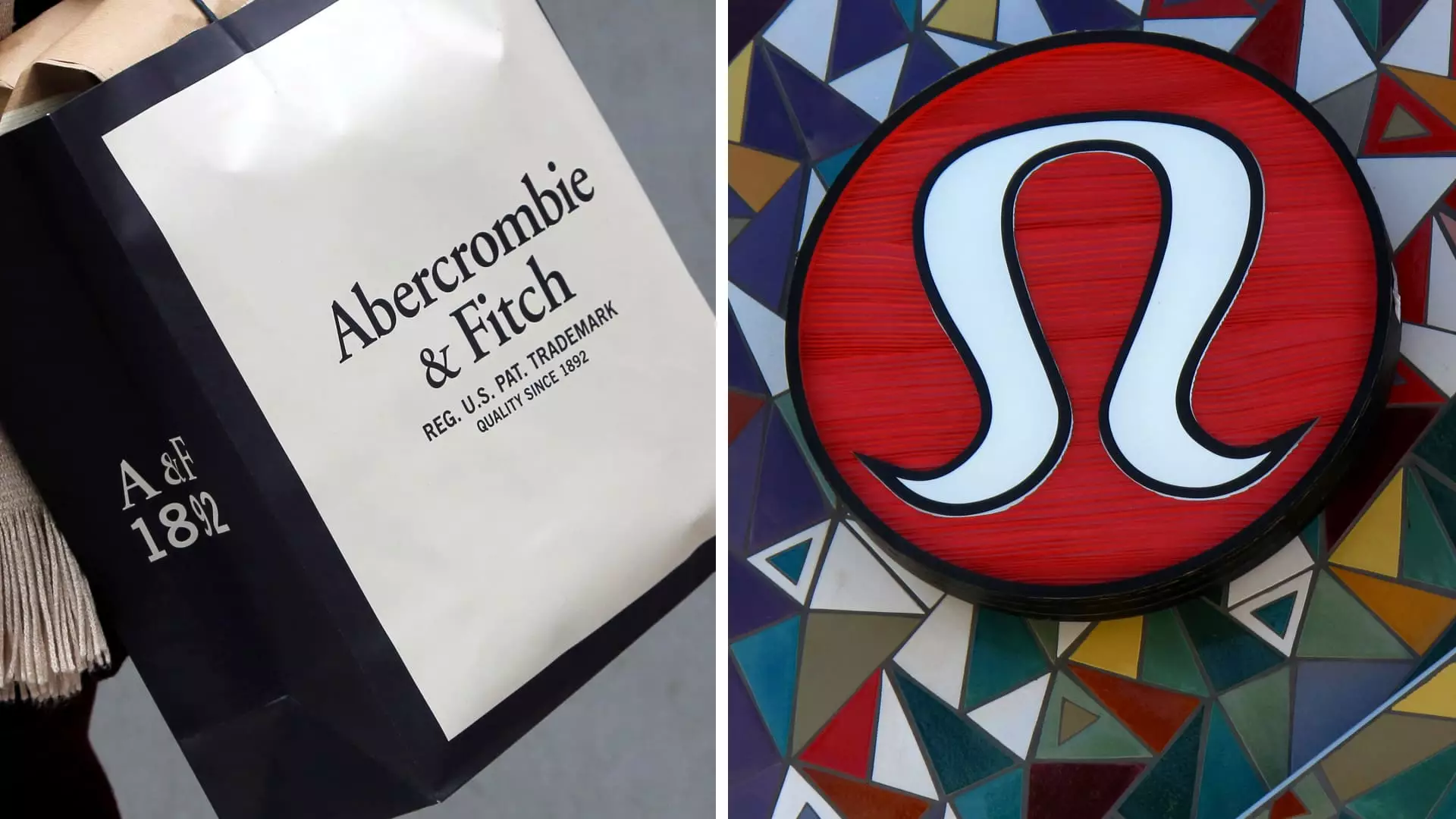As the holiday shopping season kicks into high gear, a number of major retailers have reported preliminary results that exceed expectations. However, despite these seemingly positive developments, stock prices for many of these companies have taken a dive. This paradox raises important questions about what consumers really value during the holidays, and what investors should focus on moving forward.
On Monday, notable retailers such as Lululemon, Abercrombie & Fitch, and American Eagle delivered strong forecasts for the fourth quarter. Lululemon, for instance, anticipates sales growth between 11% and 12%, revising its previous projection upward to approximately $3.56 billion and $3.58 billion. The company also improved its profit predictions significantly, expecting earnings per share to reach between $5.81 and $5.85, compared to earlier expectations ranging from $5.56 to $5.64.
Abercrombie & Fitch echoed these sentiments by slightly increasing its sales outlook to a range of 7% to 8%. Whereas last year’s holiday sales skyrocketed by a remarkable 21%, current forecasts indicate a more moderate growth trajectory. Despite this deceleration, Abercrombie is projecting full-year sales growth of 15%, which is still in line with last year’s robust performance. The shift in focus to profitability over sheer sales numbers appears to be a strategic pivot, suggesting a strong willingness to adapt to the pressures of the retail market.
Conversely, Macy’s shared a decidedly less optimistic outlook, signaling that its key quarter may perform slightly below initial expectations. The department store giant announced that sales could fall within or slightly below the previously estimated range of $7.8 billion to $8.0 billion—news that sent its shares plummeting more than 6% in intraday trading. Unlike its peers, which are basking in the glow of positive sales reports, Macy’s struggles underscore the challenges faced by legacy retailers in adjusting to a changing market landscape fueled by e-commerce and shifting consumer preferences.
While some retailers are thriving through innovative online strategies, others, like Macy’s, seem caught in an outdated operational model. The stark contrast between these reports highlights a growing divide within the industry, with nimble brands adapting to changing consumer habits, and larger, established entities grappling with their evolving role in a digital-first marketplace.
Urban Outfitters: Mixed Performance and Unique Challenges
Urban Outfitters also reported early holiday results that indicated net sales grew by 10% compared to the prior year, demonstrating a fledgling recovery. However, the company faced a concerning decline in its namesake brand sales, which fell by 4%. This decline was offset by double-digit growth in its Anthropologie and Free People lines. Additionally, Urban’s rental service, Nuuly, experienced a remarkable 55% increase in sales, suggesting that alternatives to purchase—a trend accelerated by the pandemic—are gaining traction.
Although Urban Outfitters showcased strong total sales growth, its mixed performance across brands presents a nuanced understanding of consumer behavior, emphasizing that one company’s overall success may not be indicative of universal popularity across its offerings.
Market Sentiment Reflects Consumer Caution
Despite these early results that suggest a potentially fruitful holiday season, Wall Street’s tepid reaction amplifies investor caution. After a prolonged period of robust growth, there may be growing concern about the sustainability of these trends as consumer sentiment shifts under the weight of economic pressures like inflation and uncertainty.
The National Retail Federation’s expectation of a modest sales growth range between 2.5% and 3.5%, when adjusted for inflation, signifies a careful optimism rather than unbridled enthusiasm. Furthermore, early spending reports indicate that holiday retail sales for the U.S. have indeed risen by 3.8% year over year, yet these figures are tempered with the understanding that real growth remains minimal.
In the wake of mixed early holiday reports, it appears that retailers will need to rethink their strategies—not just for this season but for the approaching year. While some brands thrive amid burgeoning consumer demand, others are left grappling with outdated narratives. Focus on profitability, adaptation to digital platforms, and meeting evolving customer needs could very well dictate the future trajectory of retailers in a post-pandemic market.
As consumers remain cautious and discerning, the path forward will require not just engagement, but also meaningful connections that resonate deeply, ensuring that brands don’t merely sell, but also deliver value during crucial times of the year.

